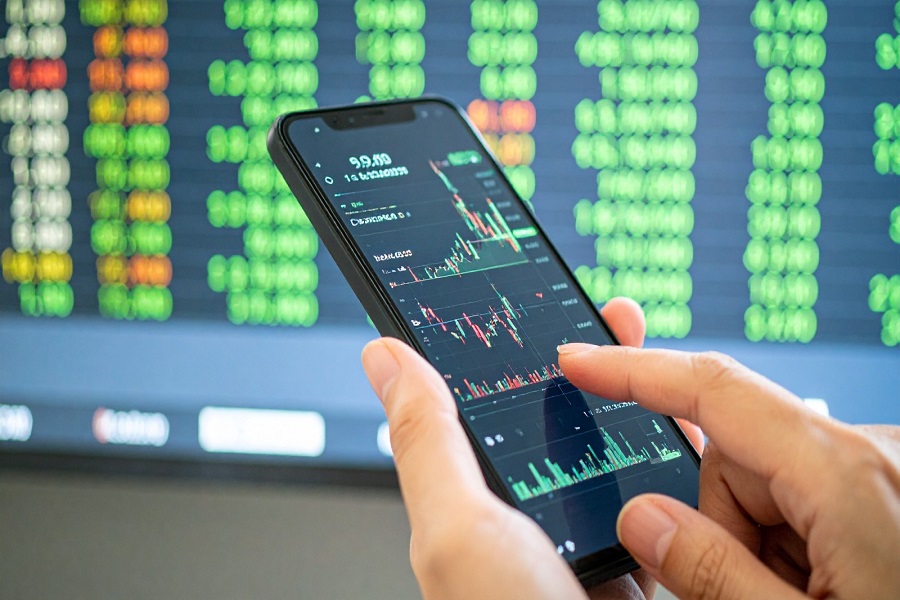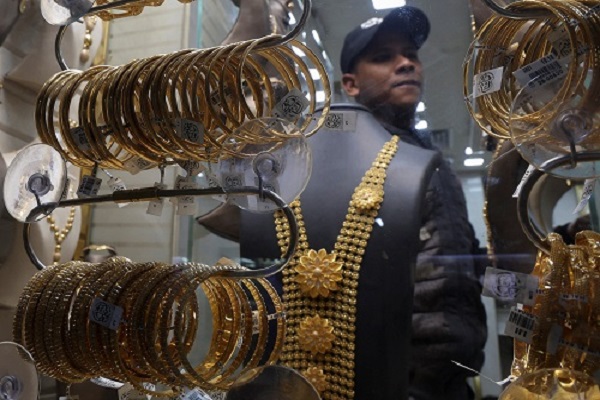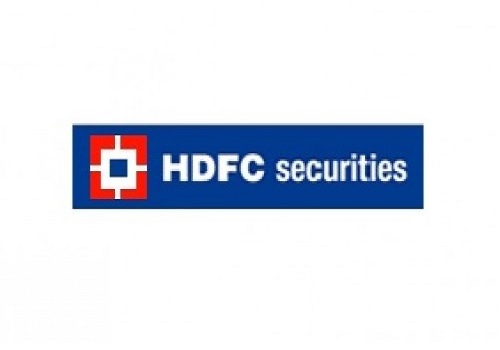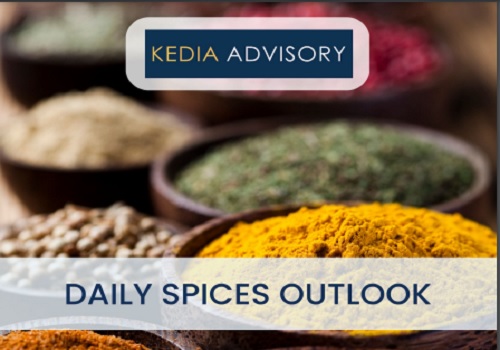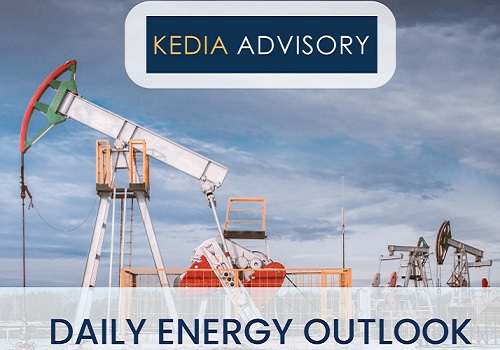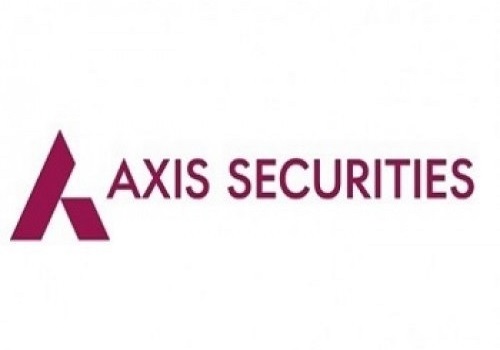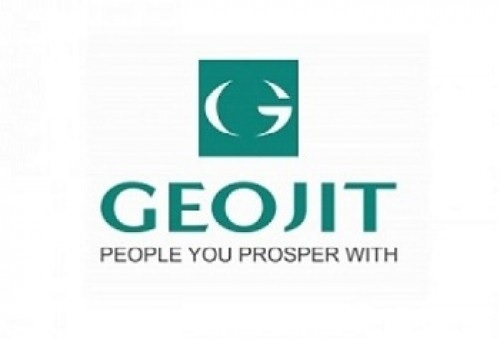Aluminium trading range for the day is 261.8-264.8 - Kedia Advisory
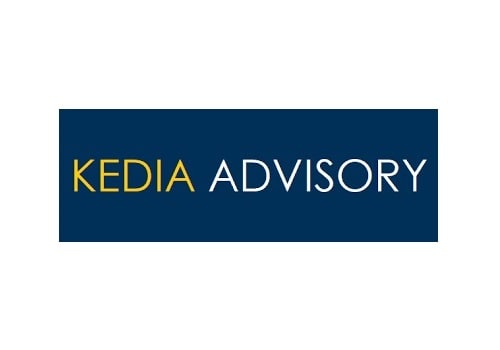
Gold
Gold prices surged by 2.08% to 1,29,852 yesterday, as renewed U.S.-China trade tensions and the ongoing U.S. government shutdown spurred strong safe-haven demand. Investor sentiment was further boosted by rising expectations of U.S. Federal Reserve rate cuts, with markets pricing in a 25 basis-point reduction in October and another in December, seen as nearly certain. The Fed’s dovish outlook gained traction after Governor Christopher Waller highlighted the growing mismatch between robust GDP growth and weak hiring trends, signaling potential easing ahead. On the physical side, India witnessed firm demand despite record-high domestic prices, as jewellers and investors accumulated bullion ahead of key festive purchases. Indian dealers quoted premiums up to $15 per ounce over official prices, compared to $9 the previous week. In contrast, Chinese demand was subdued post-holiday, with discounts ranging from $48–$60 per ounce amid sluggish retail buying. Meanwhile, Swiss customs data revealed a sharp rebound in gold exports to China, surging 254% in August to 35 metric tons, while shipments to India also rose to 15.2 tons. Deliveries to the U.S. declined sharply due to refinery shipment pauses amid tariff uncertainty. Technically, gold is under short covering as open interest fell by 2.68% to 15,478 contracts while prices gained 2,642. The metal now has support at 1,28,195 and 1,26,545, while resistance is seen at 1,30,750 and 1,31,655.
Trading Ideas:
* Gold trading range for the day is 126545-131655.
* Gold rose above $4,380/oz, reaching new record levels on MCX Rs 1,30,000/10g.
* Safe-haven demand surged amid expectations of dovish US monetary policy.
* Fed Powell cited labor market weakness, prompting near certainty of 25 bps rate cut.
Silver
Silver prices surged by 3.36% to 1,67,663 yesterday, driven by a historic short squeeze and tightening liquidity in London that forced traders to cover positions aggressively. Lease rates in London spiked over 30%, significantly raising rollover costs for short positions and triggering a scramble for physical supply. The situation was further intensified by robust demand from India, which has been actively importing silver amid concerns over potential U.S. tariffs on the metal. Geopolitical uncertainty surrounding a potential Trump-Xi meeting later this month also bolstered safe-haven buying, while expectations of upcoming U.S. Federal Reserve rate cuts in October and December lent further support to precious metals. Investment interest in silver remained strong, with global exchange-traded product (ETP) inflows reaching 95 million ounces in the first half of 2025, pushing total holdings to 1.13 billion ounces — just 7% below the 2021 peak. The value of global ETP holdings surpassed $40 billion for the first time in June. Retail investment trends were mixed, with European demand recovering from lower levels, while India posted a solid 7% year-on-year increase in retail silver investment in the first half. The Silver Institute projects the global silver deficit to narrow by 21% to 117.6 million ounces this year as demand eases slightly and supply improves. Technically, the market is under short covering as open interest dropped 6.43% to 24,014 while prices jumped 5,457. Silver finds support at 1,64,460 and 1,61,255, with resistance at 1,69,435 and 1,71,205.
Trading Ideas:
* Silver trading range for the day is 161255-171205.
* MCX silver surged to Rs 1,67,999/kg as short squeeze intensified.
* Silver rose above $54/oz, near record highs amid global supply crunch.
* London lease rates jumped over 30%, driving unsustainable short rollover costs.
Crude oil
Crude oil prices declined by 1.54% to 5,066 amid renewed US-China trade tensions, dampening the global demand outlook. Market sentiment was further pressured after conflicting reports over India’s Russian crude imports, with the U.S. claiming New Delhi agreed to halt purchases—later denied by India’s foreign ministry and refinery officials. The International Energy Agency (IEA) warned that the global oil market could face a surplus of up to 4 million barrels per day next year as OPEC+ and other producers ramp up output while demand remains subdued. The U.S. Energy Information Administration (EIA) also raised its forecast for domestic oil production to a record 13.53 million barrels per day this year, signaling ample supply ahead. EIA data showed U.S. crude inventories rose by 3.5 million barrels to 423.8 million, while gasoline and distillate stocks fell, suggesting uneven demand trends. Refinery utilization dropped sharply by 6.7 percentage points to 85.7%, reflecting weaker refining margins. Meanwhile, OPEC’s latest report kept demand growth forecasts unchanged but noted higher output, with the group producing 630,000 barrels per day more in September. Technically, crude oil is under long liquidation, with open interest dropping by 8.76% to 9,129 contracts. Prices are finding immediate support at 5,009, with further downside potential toward 4,953 if selling persists. On the upside, resistance is placed at 5,158 and 5,251.
Trading Ideas:
* Crudeoil trading range for the day is 4953-5251.
* Crude oil dropped amid heightened US-China trade tensions that continue to cloud the consumption outlook.
* Investors weighed the International Energy Agency's prediction of a supply surplus in 2026
* Russian products supply has been hampered by persistent Ukrainian drone strikes on its refineries.
Natural gas
Natural gas prices fell by 1.52% to 259.9 as mild weather forecasts and comfortable storage levels eased concerns over supply tightness. However, losses were capped by declining production and strong liquefied natural gas (LNG) exports. Forecasts indicated warmer-than-normal temperatures through late October, delaying the onset of significant heating demand. NatGasWeather noted that meaningful cooling may not emerge until the final week of the month, keeping consumption subdued in the near term. According to LSEG data, gas output in the Lower 48 states averaged 106.4 billion cubic feet per day (bcfd) so far in October, down from 107.4 bcfd in September and below August’s record of 108 bcfd. U.S. utilities injected 80 billion cubic feet (Bcf) of gas into storage for the week ending October 10, bringing inventories to 3,721 Bcf — 0.7% above last year and 4.3% higher than the five-year average. Meanwhile, LNG exports provided firm support, with flows averaging 16.3 bcfd and daily feedgas reaching a six-month high of 17.0 bcfd after the resumption of Berkshire Hathaway’s Cove Point terminal. The U.S. Energy Information Administration projected record gas production and demand in 2025, with output at 107.1 bcfd and consumption at 91.6 bcfd. Technically, natural gas remains under fresh selling pressure, with open interest rising 2.73% to 40,053 contracts. Immediate support is at 256.1, followed by 252.4, while resistance is placed at 266.6 and 273.4.
Trading Ideas:
* Naturalgas trading range for the day is 252.4-273.4.
* Natural gas gains amid mild weather forecasts and robust storage levels eased concerns over supply tightness.
* However, downside seen limited on a decline in output so far this month and record gas flows to liquefied natural gas export plants.
* US utilities injected 80 billion cubic feet (Bcf) of natural gas into storage
Copper
Copper prices rose modestly by 0.22% to 993.85, supported by supply concerns and expectations of global monetary easing. The market found strength as plunging treatment and refining charges (TC/RCs) threatened smelter margins, prompting worries about reduced refined output. Importers across Japan, South Korea, and Spain warned that persistently low TC/RCs could hurt industry sustainability. Additional support came from speculation over potential U.S. Federal Reserve rate cuts amid rising U.S.-China trade tensions, which heightened economic uncertainty. On the supply side, disruptions at major mines in Chile and Indonesia continued to constrain global output. Codelco’s August production fell to its lowest level in over two decades, while Indonesia’s Grasberg mine faced ongoing restrictions following a fatal accident and the expiry of its export license. China’s copper concentrate imports fell 6.2% in September to 2.59 million tonnes, reflecting lower Indonesian shipments, though year-to-date imports remain up 7.7%. Refined copper imports rose 14.12% to 485,000 tonnes in September. According to the International Copper Study Group (ICSG), the refined copper market posted a surplus of 57,000 tonnes in July, with an expected surplus of 178,000 tonnes in 2025, followed by a deficit in 2026. Technically, the market is witnessing short covering as open interest dropped 5.29% to 5,799 while prices gained 2.15. Copper has immediate support at 990.8 and 987.6, while resistance is seen at 996.9 and 999.8.
Trading Ideas:
* Copper trading range for the day is 987.6-999.8.
* Copper gains as plunging treatment and refining charges threatened to curb refined output by squeezing producer margins.
* The metal also drew support from expectations of additional Federal Reserve rate cuts.
* Top US officials criticized China’s rare earth export controls for potentially disrupting supply chains, though Beijing defended the move.
Zinc
Zinc prices edged higher by 0.52% to 291.4 amid expectations of potential capacity cuts by Chinese miners and refiners, though gains were capped by renewed U.S.-China trade tensions that could dampen global demand. Tight supply conditions on the London Metal Exchange (LME) also lent support, with zinc inventories falling to 48,825 tons—their lowest since May 2023—after slumping 80% this year. The premium for LME cash zinc over the three-month contract narrowed to $75 a ton from $202 earlier in the week, reflecting short-term supply tightness. In the supply landscape, Japan’s Mitsui Mining and Smelting projected refined zinc output of 106,500 metric tons for H2 FY2025/26, down 6.6% year-on-year, while the closure of Toho Zinc’s Annaka plant is expected to further trim supply. However, record production from Ivanhoe Mines’ Congo operations—up 37% QoQ—added to global supply. Treatment charges in China rose to $87.5 per ton, signaling improved smelter margins after being negative late last year. ILZSG data showed the global zinc market swung to a 30,200-ton surplus in July from a 21,100-ton deficit in June, while the year-to-date surplus reached 72,000 tons, down from 185,000 tons a year earlier. Technically, the market witnessed short covering as open interest fell by 2.25% to 2,695 contracts while prices rose 1.5. Zinc has immediate support at 290 and 288.6, while resistance is seen at 292.3 and 293.2.
Trading Ideas:
* Zinc trading range for the day is 288.6-293.2.
* Zinc prices gained amid likelihood of capacity cuts by Chinese miners and refiners.
* However upside seen limited as trade tensions between the US and China, escalated, risking demand growth for the metal.
* The premium for the LME cash zinc contract against the three-month fell to $75 a ton from Monday's $202.
Aluminium
Aluminium prices gained 0.3% to 263.45, supported by ongoing supply concerns amid tightening global production and geopolitical uncertainties. The upside, however, remained capped by escalating U.S.-China trade tensions that continue to cloud demand prospects for industrial metals. China, the world’s largest aluminium producer, reduced its annual base metal output growth target to 1.5% for 2025–26 from 5% earlier, aligning with its 45 million-ton cap designed to slow overcapacity and curb deflationary risks. On the supply front, Alcoa’s decision to shut its Kwinana alumina refinery in Australia due to deteriorating ore grades added to concerns over raw material constraints. Meanwhile, Guinea’s cancellation of mining licenses for Guinea Alumina threatens to disrupt global bauxite supply chains, potentially impacting Emirates Global Aluminium’s operations. According to the International Aluminium Institute (IAI), global primary aluminium output in August rose 0.9% YoY to 6.277 million tonnes, while data from the World Bureau of Metal Statistics (WBMS) showed a global supply deficit of 119,900 tonnes in July and a cumulative shortfall of 985,300 tonnes for January–July 2025.China’s aluminium exports dipped to 521,000 tonnes in September from 534,000 tonnes in August, while imports rose 12.9% YoY to 320,000 tonnes, reflecting resilient domestic demand. Technically, the market is under short covering, with open interest dropping by 3.56% to 2,735 lots as prices rose 0.8. Aluminium has immediate support at 262.6 and 261.8, while resistance is seen at 264.1 and 264.8.
Trading Ideas:
* Aluminium trading range for the day is 261.8-264.8.
* Aluminium gains due to persistent threats to supply.
* Alcoa announced it will shut its Kwinana alumina refinery in Australia due to deteriorating bauxite or grades.
* Chinese authorities cut their annual output growth target for base metals to an average of 1.5% annually for 2025 and 2026, compared to the 5% target previously.
Turmeric
Turmeric prices surged by 5.45% to 14,664 yesterday, supported by crop damage concerns across major growing regions including Maharashtra, Andhra Pradesh, and Karnataka. Excessive rainfall in these states, coupled with persistent showers in Erode, has led to disease outbreaks and raised worries about crop preservation due to high humidity. In Nanded, around 15% of the turmeric area has reportedly been affected by heavy rains, adding to supply concerns. However, upside potential remains capped amid reports of increased acreage for the 2024–25 season, which stands at 3.30 lakh hectares — about 10% higher than the previous year — with projections suggesting a further 15–20% rise in sowing due to favorable conditions. Market sentiment was further strengthened by low inflows, near-depleted farmer stocks in Warangal, and steady trade activity at key mandis such as Duggirala, where strong buyer demand has been observed for new-crop produce commanding higher prices. Daily arrivals in Duggirala range between 1,000–1,200 bags, with around 50–55% of the new crop already traded. On the export front, shipments during April–July 2025 rose 2.29% to 63,020 tonnes compared to the same period last year, while July exports saw a 9.31% month-on-month increase. Technically, the market witnessed fresh buying with open interest rising 3.17% to 12,210 contracts. Turmeric now has support at 14,196 and 13,728, while resistance is seen at 14,926 and 15,188.
Trading Ideas:
* Turmeric trading range for the day is 13728-15188.
* Turmeric gains as yields in Maharashtra, Andhra Pradesh and Karnataka have been affected due to rains.
* Also, due to continuous rains in Erode, disease outbreaks have started emerging in some areas.
* Recent heavy rainfall in Nanded has adversely affected the cultivation, damaging approximately 15% of the crop area.
* In Nizamabad, a major spot market, the price ended at 13883.85 Rupees gained by 1.74 percent.
Jeera
Jeera prices edged slightly higher by 0.13% to 19,155 yesterday, supported by short covering after recent declines triggered by weak export demand following the end of the retail season. Market sentiment improved marginally after the GST Council reduced the GST rate on jeera to 5%, providing relief to FMCG exporters and boosting expectations for better domestic demand. However, overall trade activity remains subdued amid comfortable supplies and tepid overseas inquiries. Farmers are still holding about 20 lakh bags of cumin, with only 3–4 lakh bags likely to be traded before the end of the season, implying a large carry-forward stock of nearly 16 lakh bags into the next year. On the production front, India’s jeera output for the current season is estimated at 90–92 lakh bags, down from 1.10 crore bags last year, due to a reduction in sowing area. Gujarat’s production is projected at 42–45 lakh bags and Rajasthan’s at 48–50 lakh bags. Globally, production from competing regions such as China, Syria, Turkey, and Afghanistan remains low due to unfavorable weather conditions, but this has yet to significantly lift Indian exports. Jeera exports during April–July 2025 declined by 19.81% year-on-year to 73,026 tonnes, with July shipments down 20.83% from last year. Technically, the market witnessed mild fresh buying as open interest rose by 0.17% to 3,582 contracts. Jeera now has support at 19,020 and 18,880, while resistance is seen at 19,300 and 19,440.
Trading Ideas:
* Jeera trading range for the day is 18880-19440.
* Jeera gains on short covering after price dropped due to weak export demand post retail season.
* In July 2025 around 13778.60 tonnes of jeera were exported as against 16,322.06 tonnes in June 2025 showing a drop of 15.58%.
* GST council lowers GST rate to 5% which will support FMCG exports & domestic demand.
* In Unjha, a major spot market, the price ended at 18759.95 Rupees dropped by -0.17 percent.
Views express by all participants are for information & academic purpose only. Kindly read disclaimer before referring below views

